
 |
|
|||||||
| Forum Rules | Firearms Safety | Firearms Photos | Links | Library | Lost Password | Email Changes |
| Register | FAQ | Calendar | Today's Posts | Search |
 |
|
|
Thread Tools | Search this Thread |
|
|
#1 |
|
Senior Member
Join Date: December 10, 1999
Location: California
Posts: 2,716
|
With the rumors of K frame cone cutting...
Would there be any advantage to chamfering the cylinder?
 I'm not sure how legitimate the stories are, but just wondering. |
|
|
|
|
#2 |
|
Junior member
Join Date: October 20, 2012
Posts: 5,854
|
Yes.
Doing so would cause a drop in thrust factor pressure against the frontal sidewalls of the water table IMHO. |
|
|
|
|
#3 |
|
Member Emeritus
Join Date: August 19, 2004
Posts: 7,133
|
12,
Bourbon today, or scotch? Lavan, Not to reduce cone erosion, no. Denis |
|
|
|
|
#4 |
|
Senior Member
Join Date: November 10, 2014
Posts: 1,378
|
K frame 357s with steady diet of 110gr HPs are known for cone cutting. I have
never seen it myself. I did see a High Standard stub nose 357 with cone badly eroded from hot loads with light bullets, |
|
|
|
|
#5 | |
|
Senior Member
Join Date: December 11, 2004
Location: Redwood City, Ca.
Posts: 4,114
|
Quote:
Flame cutting normally effects the top strap. It cuts some and then stops. Generally not an issue that effects the gun in any serious way. The unionformed worry on it though. What you might be thinking of is cracked forcing cones. Which is another story. tipoc
__________________
1. All guns are always loaded. 2. Never let the muzzle cover anything you are not willing to destroy. 3. Keep your finger off the trigger till you are ready to shoot. 4. Identify your target and know what is beyond it. |
|
|
|
|
|
#6 |
|
Senior Member
Join Date: February 12, 2005
Location: North central Ohio
Posts: 7,486
|
tipoc has it right. Chamfering the cylinder would offer no advantage in terms of reducing wear on the forcing cone. If excessive erosion is a concern on a K-frame S&W .357 Magnum/.38 Special revolver, shoot the Magnums less (especially the 125 grain bullets from what I've read) and the Specials more.
__________________
ONLY AN ARMED PEOPLE CAN BE TRULY FREE ; ONLY AN UNARMED PEOPLE CAN EVER BE ENSLAVED ...Aristotle NRA Benefactor Life Member |
|
|
|
|
#7 |
|
Senior Member
Join Date: December 11, 2004
Location: Redwood City, Ca.
Posts: 4,114
|
The above from ludwig is correct. Also keep the cone and the barrel clean and free of lead build up.
Cracked forcing cone on k frame carbon steel 357s only began after high velocity jhp loads began to be used in the 1970s. The issue was not the hot loads. It was the build up of lead and carbon from firing many lrn bullets followed by many hot jhp rounds without cleaning the gun properly of lead build up. Doing this repeatedly caused issues do to the thin area of the forcing cone. tipoc
__________________
1. All guns are always loaded. 2. Never let the muzzle cover anything you are not willing to destroy. 3. Keep your finger off the trigger till you are ready to shoot. 4. Identify your target and know what is beyond it. Last edited by tipoc; August 8, 2018 at 03:15 PM. |
|
|
|
|
#8 |
|
Senior Member
Join Date: December 10, 1999
Location: California
Posts: 2,716
|
Okey doke.
Thanks. I figured the top strap would have a wider and thus less intense gap blast. I knew the cracked forcing cone was the hot light loads but never saw it. |
|
|
|
|
#9 | |
|
Staff
Join Date: March 11, 2006
Location: Upper US
Posts: 28,820
|
Quote:
This subject has been discussed at length in previous years, a search will turn up quite a bit of information. Do understand that the cracked forcing cones issue is not something that happened to every gun, every time, the way some people make it sound. Further details to follow...
__________________
All else being equal (and it almost never is) bigger bullets tend to work better. |
|
|
|
|
|
#10 |
|
Senior Member
Join Date: February 13, 2006
Location: Washington state
Posts: 15,248
|
Forcing cones cracking has been an issue with 357 magnum K frames ever since I have been working on guns (35 years). Remember that K frames were originally designed for 32 caliber cartridges, and putting a bigger hole in the same size barrel shank leaves the walls thinner. The forcing cones are very thin, and repeated hammering with hot jacketed loads will eventually split the forcing cone. Pretty much a proven fact.
Gas cutting is a separate issue, and S&W and Colt used to machine a small divot in the top strap directly above the barrel-cylinder gap to move the metal further away from the high pressure gases discharged there. Worked well, never saw an older Colt or S&W with gas cutting on the top strap.
__________________
Never try to educate someone who resists knowledge at all costs. But what do I know? Summit Arms Services |
|
|
|
|
#11 |
|
Member Emeritus
Join Date: August 19, 2004
Posts: 7,133
|
Talking about three distinctly different things in this thread.
Cone erosion, cone cracking, and topstrap flame cutting. None of which would be affected by chamfering the chambers. And chamber chamfering is done at the rear of the cylinder, beveling is done at the front. Denis |
|
|
|
|
#12 | |
|
Senior Member
Join Date: October 16, 2014
Location: Iowa
Posts: 1,634
|
Quote:
FWIW I thought the cracked forcing cone was due to combination of FC erosion and the lighter/shorter bullets going into free flight while transitioning from the cylinder to the FC and then smacking into the bottom of the FC. For example if you take a light (125 grain or less) bullet and drop it into the FC you will see that barely any of the bullet sticks out of the barrel. If the FC is eroded it's possible for the bullet to be traveling without any guidance from the cylinder or barrel for a brief moment. During the free flight the gun is still moving up in recoil and when the bullet contacts the FC it smack right into the weakest part of the FC. |
|
|
|
|
|
#13 |
|
Member Emeritus
Join Date: August 19, 2004
Posts: 7,133
|
How could the front of the cylinder be chamfered.
In the context of chamfering a cylinder, it's done on the INSIDE diameter of each chamber, very slightly, at the REAR of the chamber, to allow smoother loading. Beveling on a CYLINDER is typically done on the OUSIDE diameter of the cylinder, at the front. Chamfering the front end of a CHAMBER is something I've never heard of, and I can't imagine why you would. Denis |
|
|
|
|
#14 |
|
Senior Member
Join Date: December 11, 2004
Location: Redwood City, Ca.
Posts: 4,114
|
The front of a cylinder (the part closest to the barrel) can be both chamfered and beveled. Different operations. The front edge is chamfered with either a radius or an angle. The edges of each individual lighting cut out on the cylinder can be beveled. The bevel is often called a black powder bevel because it goes way back to the days when there was nothing but black powder single actions. There was also chamfers there as well but that was often seen on all handguns anyways.
The chamfer took away any sharp 90 degree angle on the cylinder and the bevel did the same on the edges of the cut outs on the cylinder. Below you can see the chamfer on the front of the cylinder. 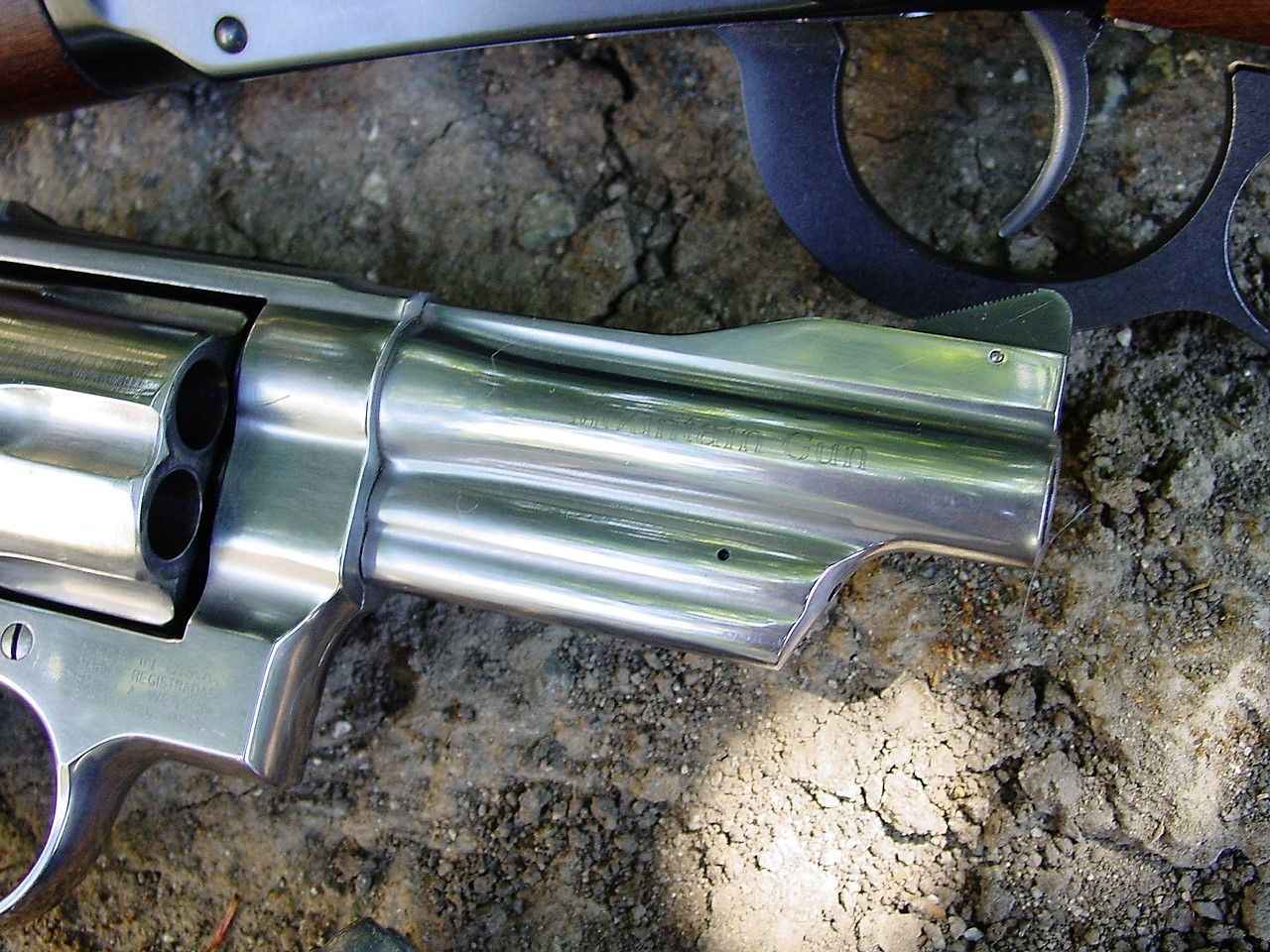 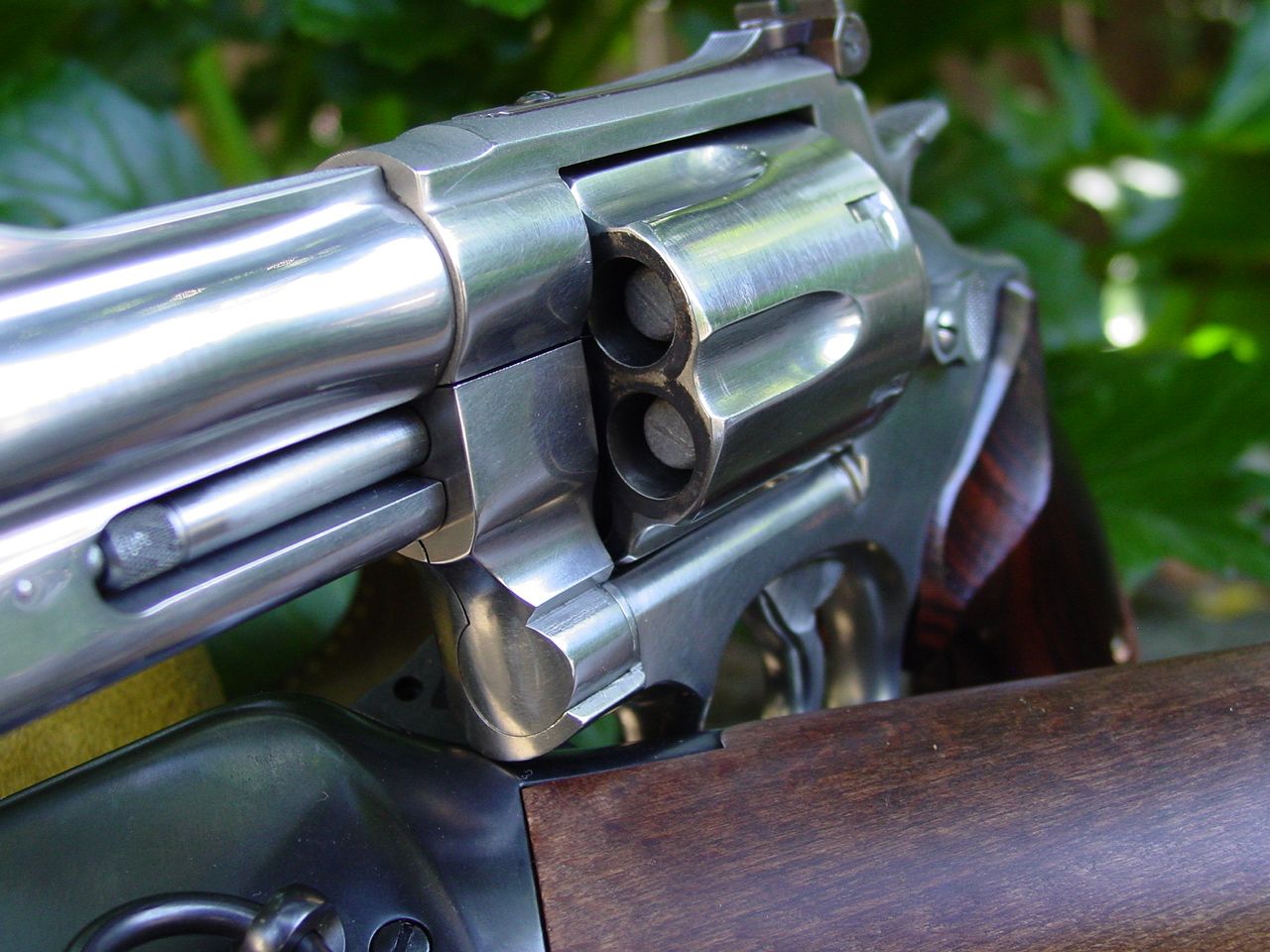 On this gun you can see the bevel; 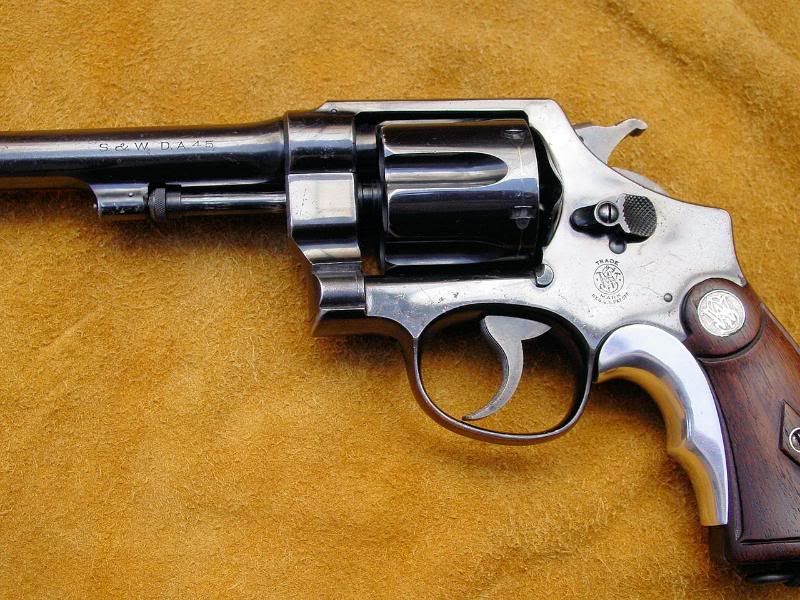 tipoc
__________________
1. All guns are always loaded. 2. Never let the muzzle cover anything you are not willing to destroy. 3. Keep your finger off the trigger till you are ready to shoot. 4. Identify your target and know what is beyond it. |
|
|
|
|
#15 |
|
Senior Member
Join Date: October 16, 2014
Location: Iowa
Posts: 1,634
|
I'm not saying it's a good idea. I'm just saying it would technically be possible. It might lower pressure slightly in-between cylinder and forcing cone but it would also allow a lot more gas to blow by and would probably just create more problems in the end.
|
|
|
|
|
#16 |
|
Member Emeritus
Join Date: August 19, 2004
Posts: 7,133
|
Tip,
I can see a cylinder bevel. Are you saying you chamfered the INSIDE diameters of the chamber throats? Denis |
|
|
|
|
#17 | |
|
Senior Member
Join Date: January 22, 2009
Location: Texas
Posts: 2,753
|
Quote:
 I can't see any way a chamfer on the front of the cylinder would stop gas cutting. I had a model 19 I learned to handload with. I shot every hot load I had bullets and powder for to reproduce the loads in my #10 Speer reloading manual. I did clean that gun to a sparkle after each shooting session. I never damaged the forcing cone. If I had any top strap cutting it was so small I never noticed it. I shot the 110gr loads with 2400 powder that was supposed to reach 1700fps velocity. No damage to the gun. I liked to shoot the mud around the edge of my buds pond. The craters those loads made were impressive. Even from 70 yards away. I wish I still had the gun. 
|
|
|
|
|
|
#18 | |
|
Senior Member
Join Date: December 11, 2004
Location: Redwood City, Ca.
Posts: 4,114
|
Dpris,
Quote:
Another of a chamfered cylinder... 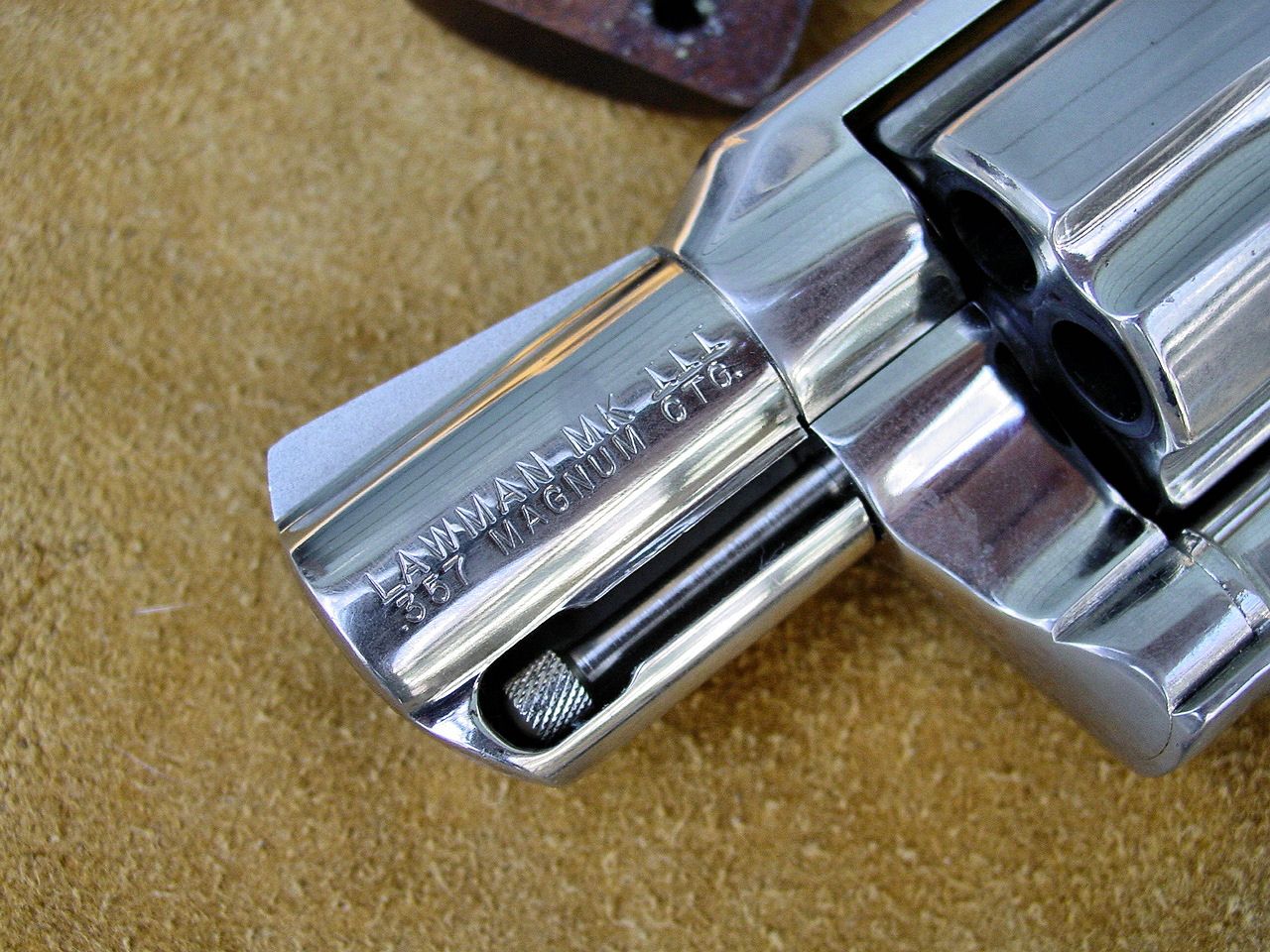
__________________
1. All guns are always loaded. 2. Never let the muzzle cover anything you are not willing to destroy. 3. Keep your finger off the trigger till you are ready to shoot. 4. Identify your target and know what is beyond it. |
|
|
|
|
|
#19 |
|
Member Emeritus
Join Date: August 19, 2004
Posts: 7,133
|
I see a beveled cylinder front.
What are you calling a chamfer? Denis |
|
|
|
|
#20 |
|
Senior Member
Join Date: October 25, 2001
Location: Alabama
Posts: 18,539
|
On a single action, a substantial bevel is known as a "black powder chamfer" from old Colt style.
Smoother to slip into the scabbard, you know. |
|
|
|
|
#21 |
|
Senior Member
Join Date: December 11, 2004
Location: Redwood City, Ca.
Posts: 4,114
|
What you are looking at in the pic of the cylinder of the Lawman is a chamfer on the front of the cylinder.
Below is a pic of a bevel on the front of a New Century (Triple Lock). 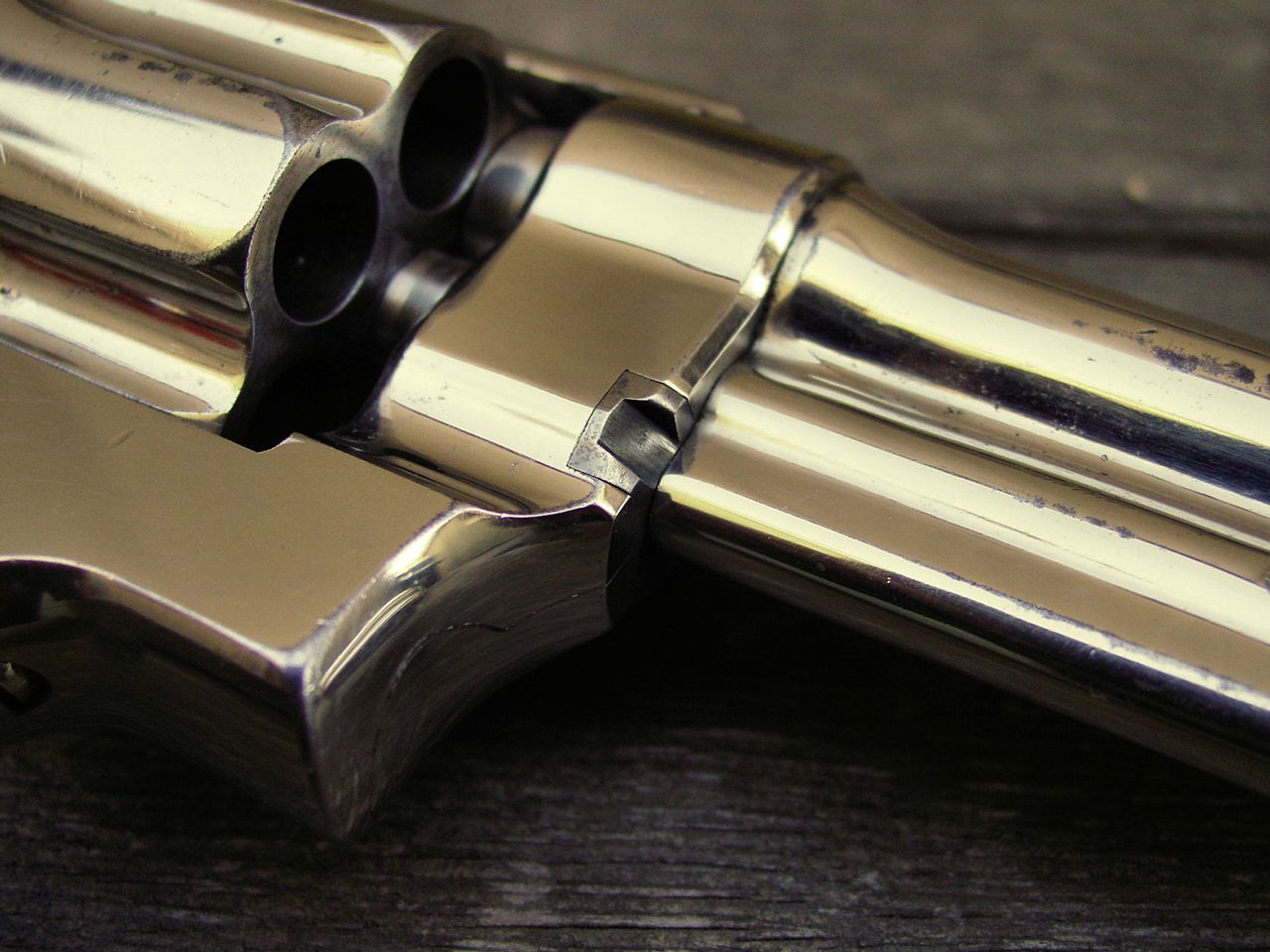 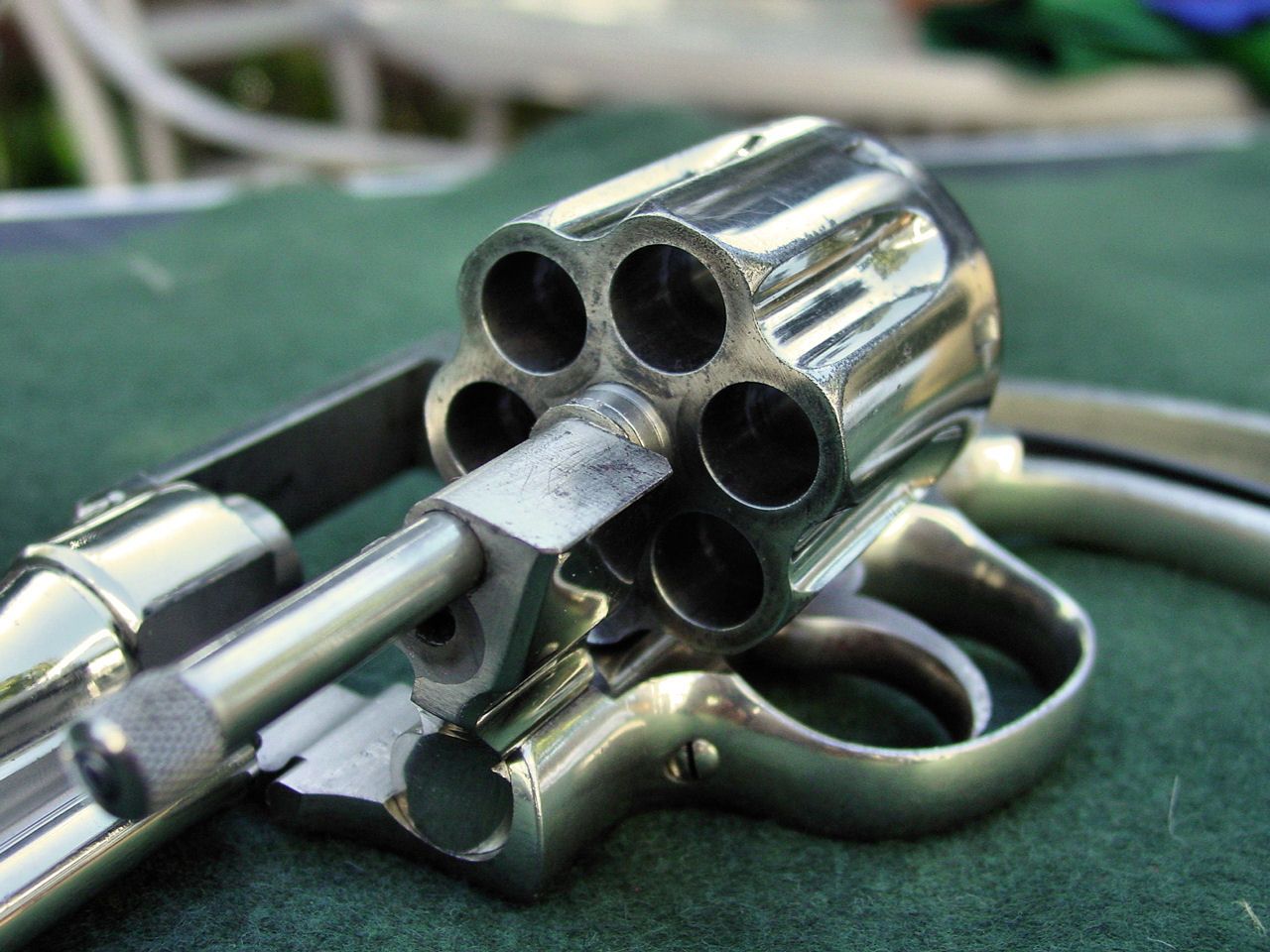 Note the difference between the Lawman and the Triple Lock. A chamfer can be either slight that just breaks the edge or deep. A chamfer can be either in the form of a radius or a bevel. On the Lawman it is deep. It was cut on a lathe. Bevels are usually done on a mill. On the TLock they were cut only on the edge of the cutouts in the cylinder. None of the above has anything to do with flame cutting or the erosion of the forcing cone. Here are a couple of discussions on the difference. https://www.sassnet.com/forums/index...owder-chamfer/ https://rugerforum.net/gunsmithing/7...olt-style.html tipoc
__________________
1. All guns are always loaded. 2. Never let the muzzle cover anything you are not willing to destroy. 3. Keep your finger off the trigger till you are ready to shoot. 4. Identify your target and know what is beyond it. |
|
|
|
|
#22 |
|
Senior Member
Join Date: December 11, 2004
Location: Redwood City, Ca.
Posts: 4,114
|
__________________
1. All guns are always loaded. 2. Never let the muzzle cover anything you are not willing to destroy. 3. Keep your finger off the trigger till you are ready to shoot. 4. Identify your target and know what is beyond it. |
|
|
|
|
#23 |
|
Member Emeritus
Join Date: August 19, 2004
Posts: 7,133
|
First I've ever heard of the use of the word "chamfer" on the OUTSIDE of cylinder, at the front.
I've led a sheltered life, I've only heard & seen various degrees of bevel up front. Never chamfer there. Chamfer's reserved for the inside of the back end of the chambers. Denis |
|
|
|
|
#24 |
|
Staff
Join Date: March 11, 2006
Location: Upper US
Posts: 28,820
|
One does chamfer both the inside and outside of case mouths after trimming, so I suppose chamfering the front of a cylinder isn't a gross grammar violation, but it is an unusual and uncommon use of the term, so exactly what it meant should be explained in detail.
__________________
All else being equal (and it almost never is) bigger bullets tend to work better. |
|
|
|
|
#25 |
|
Senior Member
Join Date: January 24, 2014
Posts: 577
|
Model 19 S&W
I could not find a K38 locally. Found a really nice 19-5 with 6" barrel that would do very well. It was always impressed on me that the 19 was a part time 357.
Cone cracking happened in the thin portion of the forcing cone@ 6 o'clock. Reportedly, the problem surfaced when police forces changed to 357 Magnum. The 125gr. loads were the offender. My 19 shoots very well with target WC loads. My feelings is if I want a full time 357 look at the N frame Smith or Ruger's. For the 19 it's gonna be lead hollow points duplicating the FBI load. Otherwise, it's old time WC target loads. I had called on having some work done on the gun at the factory. Before I could get many words out the rep talked over me sharing there were no more cylinders or barrels available. I considered that a hint. For magnums it's the 28-2.
__________________
Intentionally Antagonizing Another Member  Insults and Ad Hominems Insults and Ad Hominems 
Last edited by J.G. Terry; August 10, 2018 at 11:54 AM. |
|
|
 |
|
|